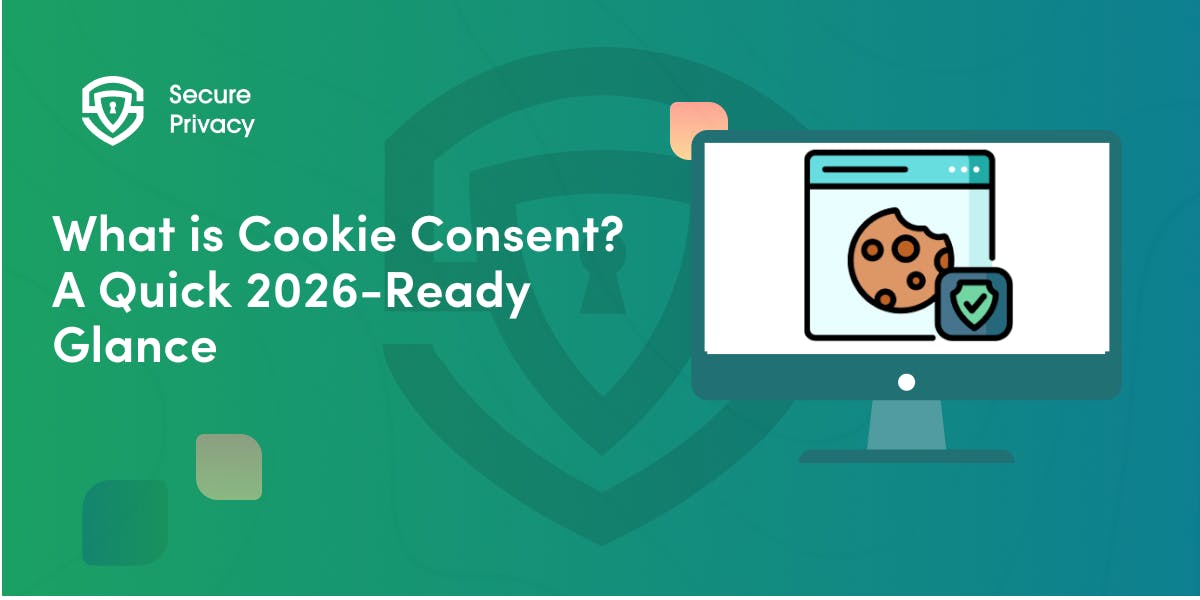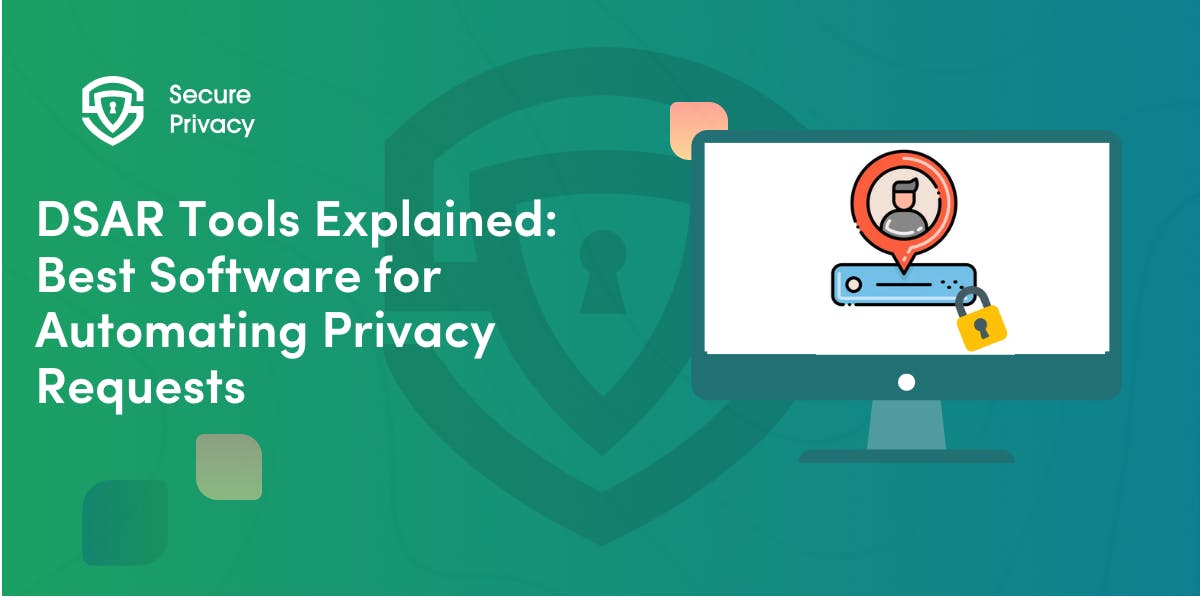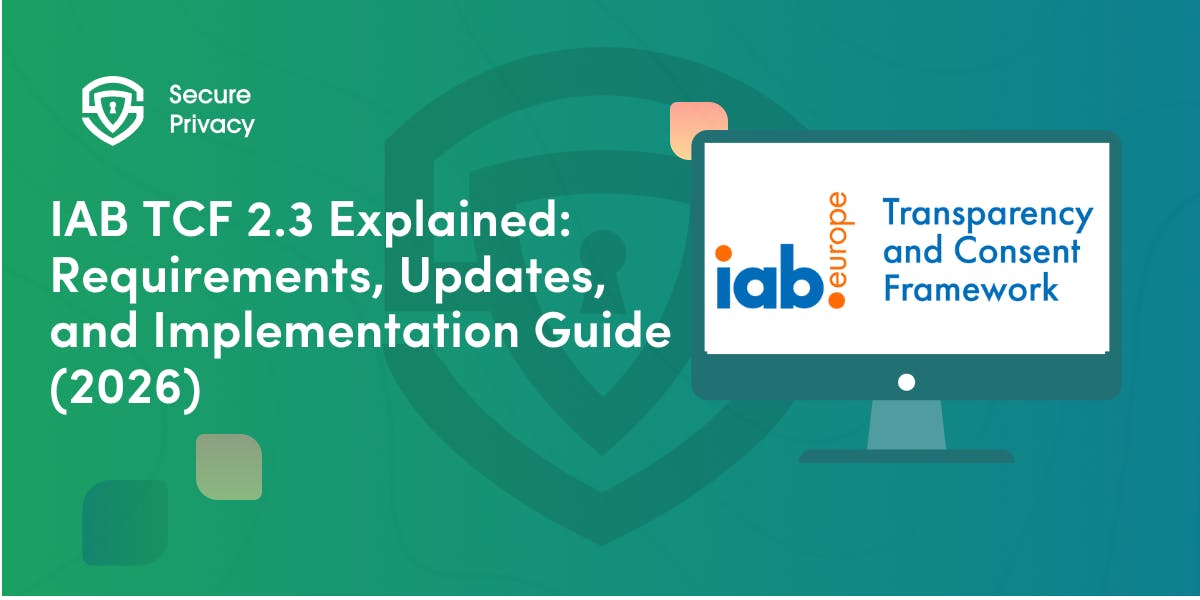Multilingual Privacy Policies: Best Practices for Global Compliance
Your documentation might be legally compliant in English but completely ineffective — or even non-compliant — for users who speak other languages.
If you're serving international audiences with English-only documentation, you're potentially violating transparency requirements while creating trust barriers that damage user relationships and business growth.
Multilingual privacy policies are essential for global businesses operating across diverse linguistic communities. Regulations like Mexico's LFPDPPP and GDPR require "clear and plain language" that users can understand, which creates implicit translation requirements for businesses serving international audiences.
Meanwhile, poor translations or machine-generated documents can distort legal meanings, create regulatory gaps, and expose your business to penalties that reach into the millions. The challenge goes beyond simple translation to encompass legal accuracy, cultural adaptation, and technical implementation across multiple jurisdictions with different requirements.
Getting multilingual privacy policies right means the difference between genuine global regulatory protection and expensive legal roulette.
Introduction
The Global Communication Challenge
Documentation transparency has become a universal regulatory requirement across major markets including the EU, California, Brazil, Canada, and dozens of other jurisdictions with evolving laws. These global regulations consistently emphasize user understanding and clear communication as fundamental principles.
Growing globalization creates complex international compliance obligations when businesses serve users who speak different dialects. What constitutes "clear and plain text" for English speakers may be completely incomprehensible to users who speak Spanish, German, Mandarin, or any of the hundreds of dialects represented in global web audiences.
The stakes continue rising with enforcement becoming more aggressive worldwide. GDPR fines alone have reached €5.88 billion cumulatively, with individual penalties exceeding €1 billion for companies that fail to meet transparency and communication requirements effectively.
Beyond Translation: Legal and Cultural Complexity
Document translation requires specialized expertise that goes far beyond standard website translation. Legal concepts don't translate directly between different legal systems, and terminology carries specific meanings that generic translation services often misinterpret.
Cultural adaptation becomes essential when concepts and user expectations vary significantly between different markets. What feels transparent and trustworthy in one culture might seem invasive or confusing in another, requiring careful localization beyond literal translation.
Why Multilingual Privacy Policies Matter
Legal Requirements and Transparency Obligations
GDPR specifically requires that notices be communicated in "intelligible and easily accessible form, using clear and plain text." For businesses serving EU users who speak different dialects, this creates practical GDPR multilingual policies requirements regardless of explicit multilingual mandates.
The "plain text" requirement becomes impossible to satisfy when users can't understand the communication medium used. Regulators increasingly interpret barriers as transparency failures that violate fundamental principles.
Canada provides explicit language requirements through the Official Languages Act, mandating that websites serving Canadian users provide content in both English and French. This requirement extends to privacy policies and creates clear compliance obligations for businesses operating in Canadian markets.
User Trust and Experience Enhancement
Communication in users' native languages dramatically improves privacy policy comprehension and user trust. When people understand what they're agreeing to, they make more informed decisions and develop stronger relationships with businesses that demonstrate genuine respect for their autonomy.
Consent quality improves significantly when users receive privacy information in languages they understand fluently. This leads to more thoughtful privacy choices and reduces the likelihood of consent withdrawal or privacy-related complaints.
Improved Compliance and Risk Reduction
Regulatory authorities appreciate multilingual efforts that demonstrate genuine commitment to user understanding rather than mere technical compliance. This proactive approach often results in more favorable treatment during privacy investigations and audits.
User complaints decrease substantially when privacy communications are clear and accessible. Confused users are more likely to file regulatory complaints, while users who understand privacy practices typically feel more comfortable with data collection and processing.
Challenges in Cross-Border Data Privacy Management
Legal Accuracy and Terminology Consistency
Legal translation requires specialized expertise that goes far beyond fluency in source and target languages. Privacy law concepts don't translate directly between legal systems, and incorrect translations can create compliance vulnerabilities or legal contradictions.
Terminological consistency becomes crucial when the same legal concepts must be expressed consistently across multiple languages. Variations in how key terms are translated can create user confusion and potential compliance gaps.
Cultural Context and Communication Styles
Privacy communication preferences vary significantly between cultures, affecting how transparency and trust are established. Some cultures prefer detailed, comprehensive disclosures while others respond better to concise, straightforward explanations.
Legal formality expectations differ across markets, requiring adaptation of tone and communication style. Privacy policies that feel appropriately formal in one culture might seem intimidating or excessively bureaucratic in another.
Version Control and Synchronization
Maintaining consistency across multiple language versions becomes exponentially complex as privacy policies evolve. Changes to data practices, new integrations, or regulatory updates must be reflected accurately across all language versions simultaneously.
Update coordination requires sophisticated project management to ensure that policy changes reach all relevant translators, receive appropriate review, and get implemented consistently across all supported languages.
Technical Implementation Complexity
Website privacy policy language support involves more than translating content to include appropriate presentation, navigation, and integration with existing privacy management systems. Multilingual privacy policies must work seamlessly with consent management platforms and user preference systems.
Content management becomes challenging when multiple language versions require different update schedules, review processes, and approval workflows. Technical systems must support this complexity without creating operational bottlenecks.
Privacy Policy Best Practices for Creating Multilingual Solutions
Professional Translation and Legal Expertise
Use certified legal translators with specific privacy law expertise rather than general translation services. Privacy policies require understanding of both source and target legal systems to ensure accurate communication of legal concepts and obligations.
Establish relationships with regional privacy lawyers who can review translations for legal accuracy and compliance with local privacy requirements. This expertise ensures that translated policies meet both linguistic and regulatory standards.
Implement terminology databases that maintain consistent translation of key privacy concepts across all language versions. This consistency improves user understanding while reducing legal risks from terminology variations.
Clear Language and Cultural Adaptation
Prioritize plain language principles in all language versions, adapting complex legal concepts to communication styles that work effectively in each cultural context. This may require different approaches to formality, detail level, and explanation style.
Provide culturally appropriate examples that help users understand how privacy practices affect them personally. Generic examples often fail to resonate across different cultural contexts, while localized privacy policy approaches improve comprehension significantly.
Systematic Version Control and Updates
Implement centralized content management systems that track changes across all language versions and ensure consistent updates when privacy practices evolve. This systematic approach prevents version drift and compliance gaps.
Establish change notification processes that alert relevant translators and reviewers when source policies change. This ensures timely updates across all supported languages without missing critical modifications.
User-Friendly Presentation and Access
Design intuitive language selection interfaces that help users find privacy information in their preferred languages quickly and easily. Poor navigation can undermine even excellent translation work.
Ensure consistent formatting and layout across all language versions while adapting to cultural preferences for information presentation and visual design. This enhances rather than hinders comprehension.
Ensuring International Privacy Compliance Across Different Jurisdictions
Regulatory Framework Analysis
GDPR requirements apply to any organization processing EU resident data regardless of business location. This creates translation obligations for businesses serving diverse EU linguistic communities across 24 official languages.
CCPA and US state laws generally don't mandate translation but benefit from multilingual approaches when serving diverse populations. California's diverse linguistic communities often require Spanish, Chinese, and other language support for effective privacy communication.
LGPD in Brazil emphasizes transparency and user understanding, creating practical translation requirements for businesses serving Brazil's Portuguese-speaking population while considering regional linguistic variations.
Geographic Targeting and Compliance
Use geo-location and browser language detection to serve appropriate privacy policy versions automatically while providing manual language selection options. This helps users whose preferences don't match automatic detection.
Implement regional compliance features that adapt privacy policy content to local regulatory requirements while maintaining consistency in overall privacy practices and user experience.
Legal Risk Management
Establish clear language hierarchies that specify which language version serves as the legal authority when discrepancies arise. This provides legal clarity while supporting multilingual communication.
Maintain comprehensive compliance documentation that demonstrates good faith efforts to ensure user understanding across different linguistic communities. This supports regulatory compliance arguments during investigations.
Technical Implementation Tips
Content Management and Automation
Modern consent management platforms provide sophisticated multilingual capabilities including:
- Automatic language detection
- Centralized translation management
- Real-time updates across all supported languages
API-driven translation services can integrate with privacy management systems to streamline translation workflows while maintaining quality control through professional review processes.
SEO and Accessibility Considerations
Implement hreflang tags correctly to help search engines understand language variations and serve appropriate privacy policy versions to users. This improves discoverability based on their location and language preferences.
Ensure accessibility compliance across all language versions, including screen reader compatibility, appropriate contrast ratios, and navigation patterns. These must work effectively across different cultural contexts.
Integration with Privacy Systems
Consent management platform integration should support seamless language switching while maintaining user preference consistency. This ensures that consent choices apply appropriately across all language versions.
User preference synchronization across language versions prevents confusion and ensures that privacy choices remain consistent. This applies regardless of which language version users access for preference management.
Common Pitfalls to Avoid
Translation Quality and Legal Accuracy
Avoid machine translation for privacy policies without professional review, as automated translations frequently distort legal meanings. These create compliance vulnerabilities that can be expensive to remediate.
Don't ignore regional legal variations that may require different privacy disclosures or compliance approaches across different markets. This applies even when using the same base language.
User Experience and Technical Issues
Avoid poor language selection interfaces that make it difficult for users to find privacy information in their preferred languages. This undermines the value of translation investments.
Don't neglect mobile optimization for multilingual privacy policies, as mobile users often represent significant portions of international audiences.
Maintenance and Operations
Avoid inadequate update processes that fail to maintain consistency across language versions when privacy practices or regulatory requirements change.
Don't underestimate ongoing costs for translation maintenance, legal review, and technical support required to maintain effective multilingual privacy policies over time.
Building Global Trust Through Multilingual Privacy Excellence
Multilingual privacy policies represent essential infrastructure for businesses operating in global markets or serving diverse linguistic communities. While not always explicitly required by law, they provide crucial protection against regulatory risks while demonstrating genuine commitment to user understanding and respect.
Success requires viewing multilingual privacy policies as strategic investments in user trust and regulatory compliance rather than mere translation projects. Organizations that prioritize legal accuracy, cultural sensitivity, and technical excellence in multilingual privacy communication build competitive advantages through superior user relationships.
The future belongs to businesses that can communicate effectively across linguistic and cultural boundaries while maintaining consistent privacy protection and regulatory compliance. Multilingual privacy policies provide the foundation for sustainable global growth built on user trust and transparent communication.
By implementing comprehensive multilingual privacy policy strategies now, organizations position themselves advantageously for continued international expansion. This builds the user trust and regulatory compliance necessary for long-term success in increasingly privacy-conscious global markets.
Frequently Asked Questions
Q: Do privacy laws actually require multilingual policies?
A: Most regulations don't explicitly mandate multiple versions. However, they require "clear and plain communication" that users can understand.
This creates implicit requirements when serving non-English speaking populations. Canada is a notable exception, explicitly requiring English and French versions for Canadian users.
Q: Can I use Google Translate or other machine services for policies?
A: Automated services present significant risks for important documents. They frequently distort meanings and can create compliance vulnerabilities.
If you use automated tools, ensure professional review in each target region before publication.
Q: How many versions should I support?
A: Base support on your user demographics and business priorities. Start with regions representing your largest populations.
Then expand based on growth and regulatory requirements. Most global businesses find that 5-10 versions cover their primary markets effectively.
Q: What's the cost difference between professional and machine services?
A: Professional services typically cost $150-$900 per version. Machine options appear free but often require expensive remediation when errors create compliance issues.
Professional services provide better long-term ROI through reduced risk and improved user trust.
Q: How do I keep multiple versions synchronized when they change?
A: Implement centralized content management systems that track changes across all versions. Establish clear update processes with qualified professionals.
Many modern consent management platforms provide automated support that simplifies this coordination significantly.
Q: Should I hire in-house staff or use external services?
A: Most businesses benefit from external specialized services that provide expertise in this area. In-house staff work well for ongoing maintenance if they have appropriate training.
However, initial work typically requires specialized external expertise.
Q: How do I handle cultural differences in expectations?
A: Work with cultural consultants or local experts who understand regional preferences and communication styles. Some cultures prefer detailed disclosures while others respond better to concise explanations.
Localization goes beyond simple conversion to include cultural adaptation.
Q: What technical considerations are important for multiple versions?
A: Implement proper hreflang tags for SEO and ensure mobile optimization across all regions. Integrate with consent management platforms and provide intuitive selection interfaces.
Performance optimization is crucial for international users with varying internet infrastructure.
Q: How do I verify that my versions are legally sound?
A: Have qualified attorneys in each target jurisdiction review content for accuracy and local requirements. Regular audits should verify that all versions accurately reflect actual practices.
Ensure they meet applicable regulatory standards in each region.
Q: Can different versions have different meanings or requirements?
A: Versions should convey the same essential practices and user rights. However, they may require different explanations or examples to communicate effectively in different cultural and regulatory contexts.
Establish clear hierarchies about which version serves as the authority when discrepancies arise.
Get Started For Free with the
#1 Cookie Consent Platform.
No credit card required

What is Cookie Consent? A Quick 2026-Ready Glance
Your website loads. Cookies track users. But without proper cookie consent, you're violating GDPR — risking fines up to €20 million or 4% of global revenue. Cookie consent is the legally required mechanism by which websites obtain explicit user approval before deploying non-essential tracking technologies. This requirement stems from GDPR Article 4(11) and the ePrivacy Directive, mandating that consent must be freely given, specific, informed, and unambiguous.
- Legal & News

DSAR Tools Explained: Best Software for Automating Privacy Requests
You're drowning in data subject access requests. Manual searches through dozens of systems miss regulatory deadlines and expose organizations to fines starting at $2,500 per violation. The solution? DSAR tools — purpose-built software that automates the entire process of responding to data subject access requests, from intake to delivery.
- Legal & News

IAB TCF 2.3 Explained: Requirements, Updates, and Implementation Guide (2026)
Your ad revenue dropped 40% overnight. Google stopped bidding on your inventory. Your DSP partners flagged your traffic as non-compliant. The culprit? An outdated TCF 2.2 consent string after the February 2026 enforcement deadline.
- Legal & News
- Cookie Consent

